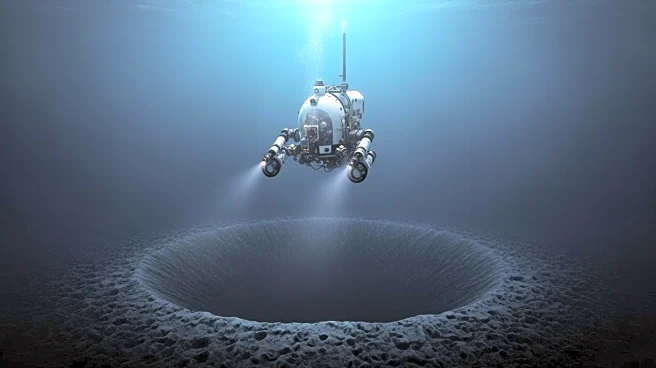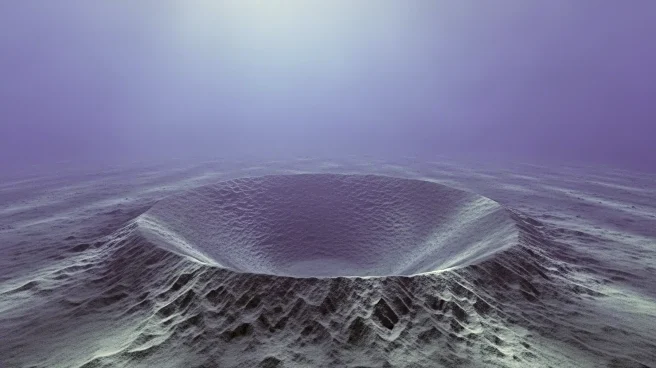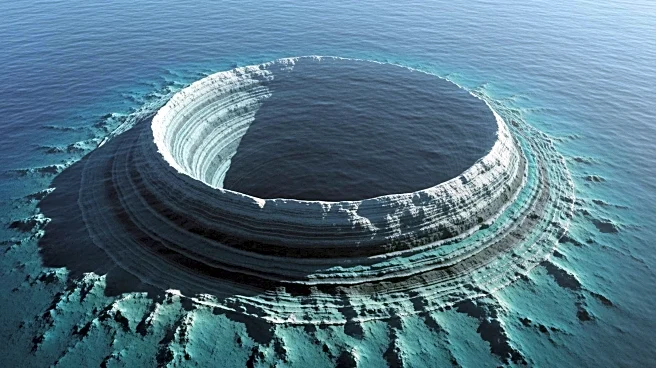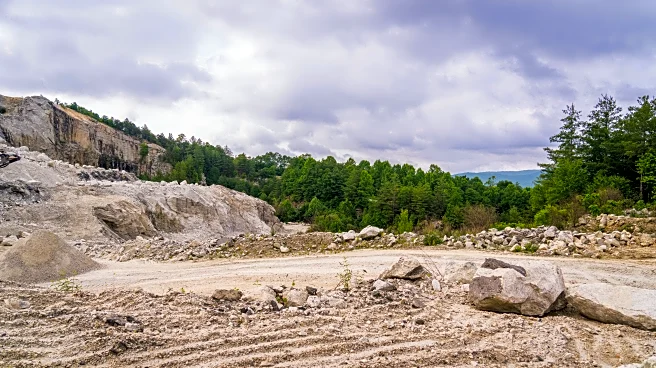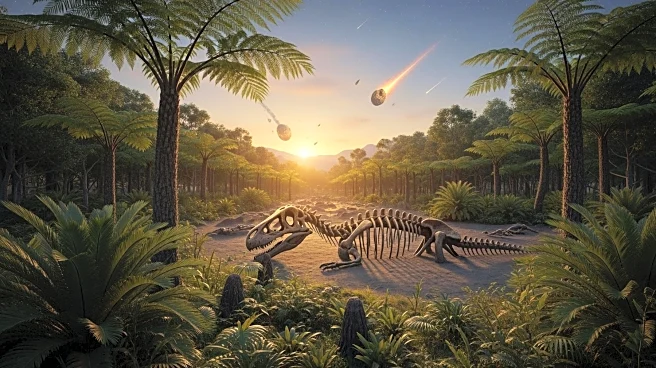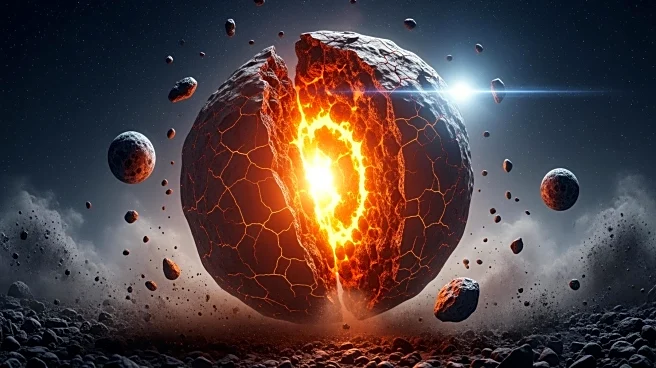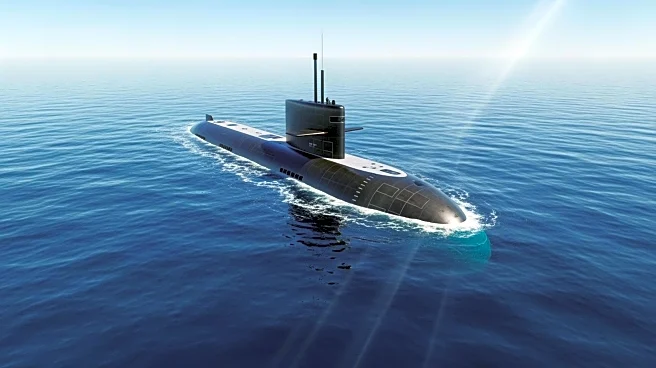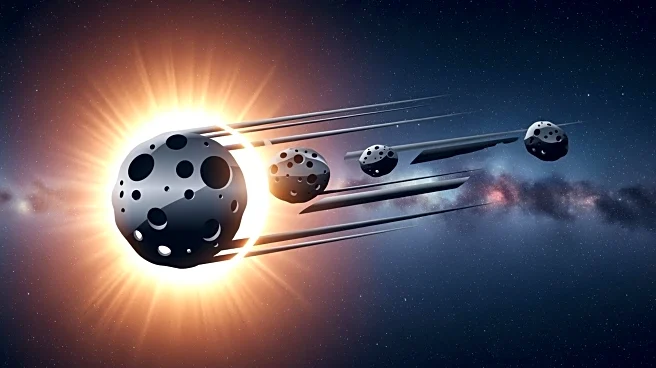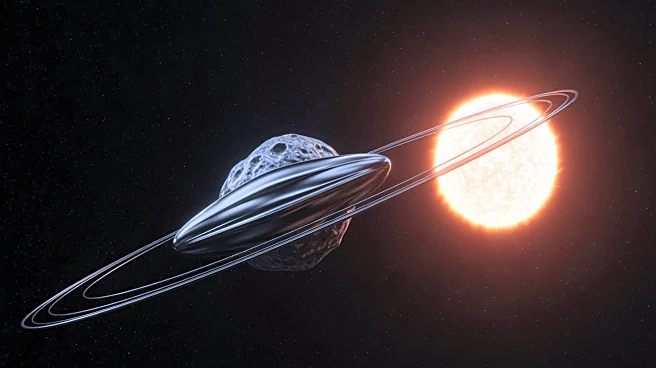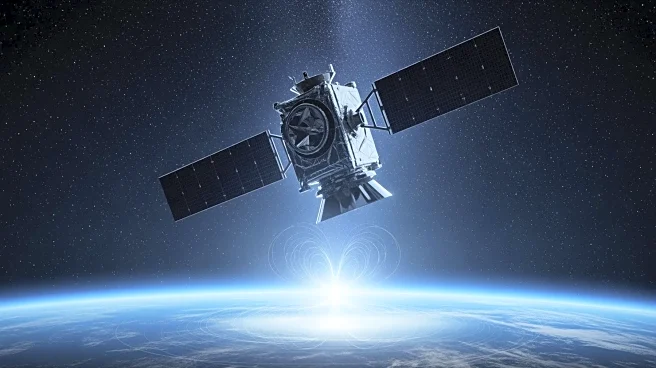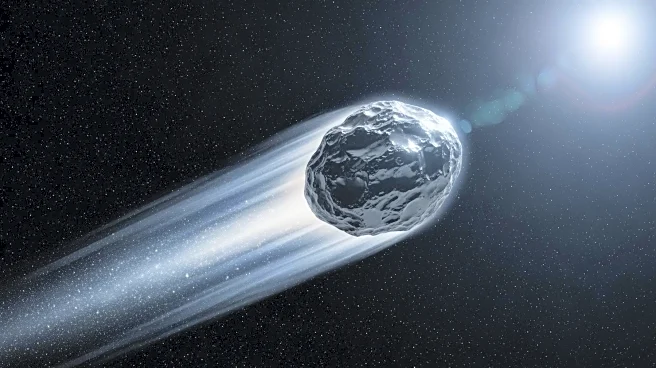What's Happening?
Researchers from Heriot-Watt University have unveiled striking 3D images of the Nadir Crater, a 5.6-mile wide asteroid impact site located beneath the Atlantic Ocean floor. The crater, formed approximately
66 million years ago, coincides with the Chicxulub impact in Mexico, linked to the extinction of dinosaurs. The crater's formation involved a deep bowl, molten rock surge, fractured rock spread, and a massive tsunami. The discovery was made using high-resolution seismic data, providing detailed insights into the crater's structure and the catastrophic events following the impact.
Why It's Important?
The revelation of the Nadir Crater offers a unique opportunity to study asteroid impacts and their effects on Earth's geological history. The detailed 3D imaging allows scientists to analyze the crater's formation and the subsequent environmental changes, contributing to the understanding of Earth's evolutionary processes. This research enhances knowledge of marine craters and their role in shaping Earth's ecosystems. The findings could inform future studies on asteroid impacts and their potential threats, aiding in the development of strategies to mitigate such risks.
